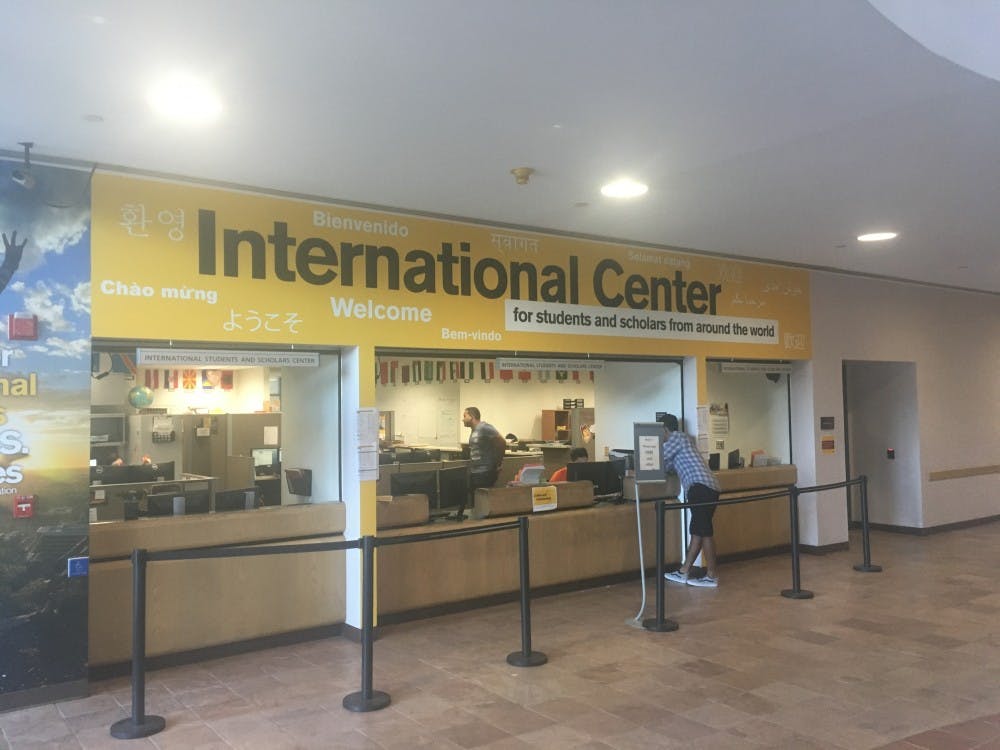Preliminary numbers from ASU show that there was a dip in the enrollment of international students in the fall of 2018, paralleling a national downward trend in international enrollment amid stricter immigration policies under the Trump administration.
Overall numbers from the last 15 years show an upward trend, but the growth has slowed considerably over the last couple of years, and preliminary data shows that growth could continue to slow this year.
Groups like NAFSA: Association of International Educators are sounding the alarm on the national slowing trend, but officials at the University are downplaying the negative connotation of the preliminary numbers, saying it is too soon to analyze the data against that of previous years.
The preliminary numbers are not official and do not reflect the final amount of international enrollment for the year, said an ASU spokesperson over email.
“International enrollment is complicated, and fluctuations from year to year in the number of students from other countries coming to ASU is multifactorial,” the spokesperson said. “Some years the numbers go up, and other years they go down.”
According to enrollment data from 2017, ASU enrolled over 10,000 international students in the fall 2017 semester, over three times the number reported for the fall 2004 semester.
Experts have said there is a national downward trend of international enrollment, and that the decline could be just the beginning of a multi-year trend.
Jill Welch, the deputy executive director for public policy at the Association of International Educators, said that restrictive policies, as well as rhetoric of the Trump administration, are among the culprits for the slowing of international student enrollment.
“There are many variables that would lead to the decline of international students in the United States, or in any particular state,” Welch said. “We see evidence that the anti-immigrant rhetoric and policies coming from this administration are having an impact — a chilling effect on student choices to study in the United States.”
Trump instituted a controversial travel ban over a year ago which banned travel from seven Muslim-majority countries, a decision that has since made its way through courts several times, eventually being upheld by the Supreme Court.
Welch said that international students are “paying more attention than we might imagine. They are paying very close attention to what changes are proposed in the United States.”
See More: Hundreds protest Trump's immigration ban at airport
However, ASU said the changes could not be tracked down to specific policy positions or political considerations.
“One thing that we are not really able to document is any political considerations international students might be taking into account,” the ASU spokesperson said. “We cannot say, for example, that any particular politicians have any particular impact on enrollment.”
Students say that the White House's policy changes are making them more and more nervous as time goes on.
Rahul Verma, who is getting a master's in mechanical engineering, said that ASU has facilitated his time in the U.S., but that the immigration policies could negatively impact him, as an immigrant from India, after he graduates.
“I am anticipating that might be the case,” Verma said. “As of now, because I am only working on campus, I am able to sustain myself … but I am definitely concerned about my future because I paid a lot for my American education here, and I feel like I should get at least two years of experience.
"The fundamental thing which attracts international students to come to ASU, or to come to any American university for that matter, is a better future," Verma said.
International students are a large part of the University, as it has become increasingly reliant on funds from their tuition as state-funding dwindles year-to-year.
See More: International students are key players in ASU’s strategic business plan
Welch said that the main goal of the association is “to remind policy makers what's at stake,” and that any significant dip in numbers “will take many years to recover from."
While the association continues its efforts and students like Verma remain cautious about their futures in the U.S., ASU officials say it's too early to compare the preliminary numbers to the year-by-year trend that has been increasing almost every year.
ASU President Michael Crow, who has touted ASU's ranking as the No. 1 public university for international students said that the downturn was slight in the big picture of international student enrollment.
“You know it’s not so much a decline ... we have twice as many international students as we had just a few years ago, so we’re just bouncing around,” Crow said. “We’re the number one public university destination in the United States … so yeah, it’s down a little bit, but not over its years and years and years of growth.”
Editor's note: Rahul Verma was previously an opinion columnist for the State Press.
Correction: An earlier version of this article mislabeled the organization NAFSA: Association of International Educators by the group's previous name. The article has been updated to reflect that change.
Reach the reporter at isaac.windes@asu.edu or follow @isaacdwindes on Twitter.
Like The State Press on Facebook and follow @statepress on Twitter.




